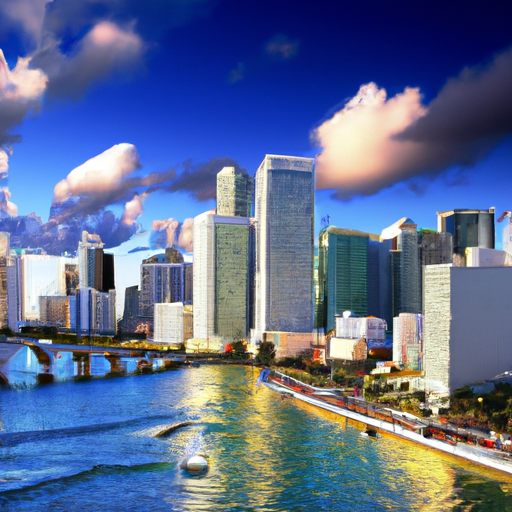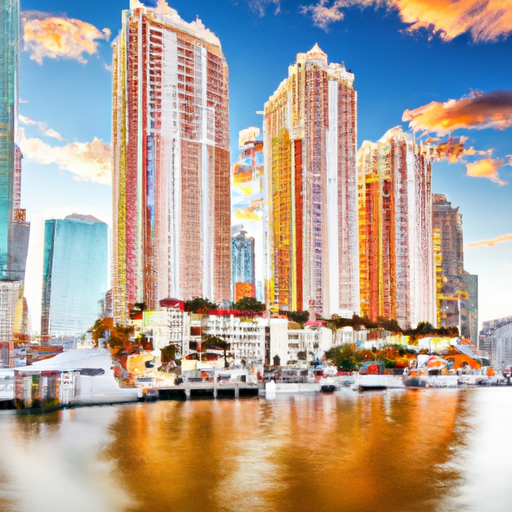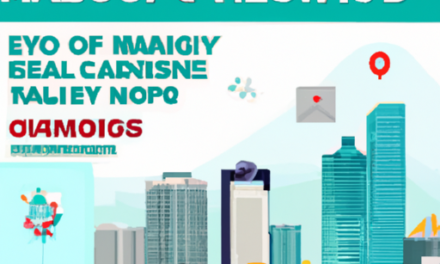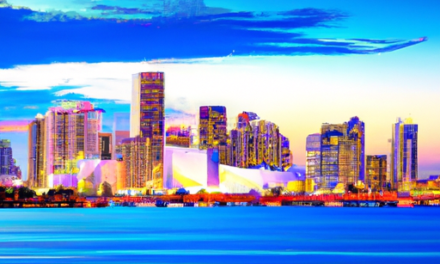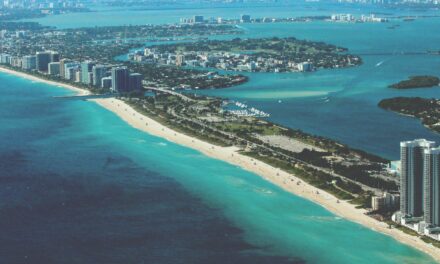In this article, you will discover the unique and captivating aspects of Miami’s architecture. From its iconic art deco buildings to its modern high-rise structures, Miami’s architectural landscape is truly one-of-a-kind. You will learn about the influences that have shaped Miami’s architectural style and how it has evolved over time. Whether you’re a history enthusiast or simply interested in the aesthetics of buildings, this article will give you a glimpse into the architectural gems of this vibrant city.
Miami’s architecture is known for its vibrant colors, sleek lines, and tropical influences. The city’s art deco buildings, characterized by their geometric designs and pastel hues, transport you back to the glamorous era of the 1920s and 1930s. These architectural gems can be found in the famous South Beach area, adding a touch of nostalgia and whimsy to the cityscape. On the other hand, Miami’s contemporary architecture showcases the city’s modern and cosmopolitan side. With its soaring skyscrapers and innovative designs, Miami’s skyline is a testament to the city’s progress and ambition. From the historic to the contemporary, Miami’s architecture offers a visual feast for the eyes and a reflection of the city’s diverse and vibrant culture. Miami’s architecture is a unique blend of diverse styles and influences, creating a vibrant and visually stunning urban landscape. From the distinctive Art Deco buildings to the sleek Modernist designs, Miami’s architecture reflects the city’s rich history, cultural diversity, and commitment to innovation. In this article, we will explore the various architectural styles that make Miami stand out, from Art Deco to Tropical Modernism, Latin American influences, sustainability efforts, waterfront designs, cultural diversity in design, urban development, public art, and the preservation of the city’s architectural heritage.
Art Deco Style
Introduction to Art Deco
Art Deco is perhaps one of the most recognizable architectural styles in Miami. It became popular in the 1920s and 1930s, and Miami’s Art Deco buildings are known for their bold geometric forms, ornamental detailing, and vibrant colors. The style was influenced by various sources, including ancient Egyptian and Mayan cultures, as well as the sleek and streamlined aesthetics of the machine age.
Art Deco Influence on Miami’s Architecture
Miami’s Art Deco buildings are a testament to the city’s glamorous past. They were built during the era when Miami Beach was booming, attracting wealthy tourists and Hollywood celebrities. The Art Deco influence can be seen in iconic landmarks like the Colony Hotel and the Fontainebleau Miami Beach. These buildings feature distinct geometric shapes, decorative elements such as ziggurat patterns, and the use of pastel colors that reflect the city’s tropical setting.
Characteristics of Art Deco Buildings in Miami
Art Deco buildings in Miami are characterized by their sleek and streamlined forms. The use of verticality in design is prominent, with many buildings featuring stepped or setback facades. These buildings often have flat roofs with terraces and rooftop gardens, allowing residents and visitors to take in the breathtaking views of the city and the ocean. The facades are adorned with decorative elements, such as porthole windows, stylized flora and fauna motifs, and neon signs that add a touch of glamour to the streetscape.
Modernist Movement
Emergence of Modernist Architecture
The modernist movement in architecture emerged during the mid-20th century, as a response to the rapid urbanization and technological advancements of the time. Modernist architecture emphasizes simplicity, functionality, and the use of clean lines and minimalist forms. It rejected the ornamental detailing of previous architectural styles and focused on creating buildings that were efficient, rational, and suited to the needs of the modern world.
Modernist Influence on Miami’s Architecture
Miami’s modernist architecture reflects the city’s embrace of the future and its ambition to become a global metropolis. Influential architects like Morris Lapidus and Arquitectonica introduced innovative modernist designs to Miami, shaping the city’s skyline and urban fabric. Modernist buildings in Miami are characterized by their sleek glass facades, open floor plans, and large windows that blur the boundaries between indoor and outdoor spaces. These designs create a sense of transparency and allow residents and visitors to enjoy panoramic views of the city and the ocean.
Key Modernist Architects in Miami
Morris Lapidus is one of the key architects who played a significant role in shaping Miami’s modernist architecture. His iconic Fontainebleau Miami Beach and Eden Roc Hotels are prime examples of his innovative designs. Arquitectonica, founded by Bernardo Fort-Brescia and Laurinda Hope-Spear, is another influential architecture firm that has left its mark on Miami. Their designs, such as the Atlantis Condominium and the Brickell Financial District, showcase their bold and forward-thinking approach to architecture.
Tropical Modernism
Defining Tropical Modernism
Tropical Modernism is a unique architectural style that combines the modernist principles of simplicity and functionality with a focus on integrating buildings with their natural surroundings. It emerged in Miami as a response to the city’s tropical climate and lush landscapes. Tropical Modernist buildings aim to create a harmonious relationship between the built environment and nature, blurring the boundaries between indoor and outdoor spaces.
Incorporating Nature in Miami’s Architecture
Miami’s Tropical Modernist buildings are designed to embrace the city’s natural beauty. Architectural features such as expansive windows, balconies, and terraces allow residents to connect with nature, enjoying views of palm trees, the ocean, and the vibrant colors of the city. Buildings often incorporate natural materials such as wood and stone, creating a warm and organic feel. In addition, green spaces and landscaping are an integral part of the design, seamlessly integrating nature with the built environment.
Famous Examples of Tropical Modernist Buildings in Miami
The Bacardi Building, designed by Enrique Gutierrez and Fernando H. Martinez, is an iconic example of Tropical Modernism in Miami. Its unique design features a series of vertical fins that provide shade while allowing for natural ventilation. Another famous example is the Vizcaya Museum and Gardens, a historic estate that combines elements of Venetian architecture with the lush landscapes of Miami. These buildings showcase the beauty of Tropical Modernist design and its integration with the natural surroundings.
Influence of Latin American Architecture
Latin American Architectural Influences in Miami
Miami’s architectural landscape is greatly influenced by the rich architectural heritage of Latin America. The city’s close proximity to Latin American countries, as well as its large Hispanic population, has contributed to the incorporation of Latin American architectural elements into Miami’s buildings. Latin American influences can be seen in the use of vibrant colors, the celebration of cultural heritage, and the incorporation of ornate details and patterns.
Colorful Facades and Vibrant Designs
One of the most distinctive aspects of Latin American architecture in Miami is the use of vibrant colors. Buildings like the Freedom Tower and the Bayside Marketplace feature facades adorned with colorful tiles and murals that reflect the vibrant cultures of Latin America. These colorful designs create a lively and welcoming atmosphere, adding character to Miami’s architectural landscape.
Celebrating Cultural Heritage through Architectural Elements
Miami’s Latin American influences can also be seen in the architectural elements that celebrate the cultural heritage of different Latin American countries. For example, the iconic Tower Theater in Little Havana incorporates elements of Cuban architecture, with its ornate facade and intricate details. Similarly, the Freedom Tower, originally an immigration processing center for Cuban refugees, features a design inspired by the Giralda Tower in Seville, Spain, paying homage to Miami’s Cuban community.
Environmental Sustainability
Miami’s Commitment to Sustainable Architecture
Miami is committed to sustainability and is at the forefront of green building practices in the United States. The city recognizes the importance of reducing its carbon footprint and mitigating the impacts of climate change through sustainable architecture. This commitment is evident in the city’s efforts to promote energy efficiency, resilience, and the preservation of natural resources.
Green Building Practices and Innovations
Miami’s architects are incorporating green building practices and innovations into their designs. Buildings are designed to be energy-efficient, with features such as solar panels, rainwater harvesting systems, and high-performance insulation. Miami is also embracing green infrastructure, such as green roofs and vertical gardens, which help to reduce stormwater runoff, improve air quality, and provide natural habitats for wildlife.
Promoting Energy Efficiency and Resilience
Given Miami’s vulnerability to rising sea levels and extreme weather events, the city is also focused on building resilience. Architects are incorporating flood-resistant design strategies and using materials that can withstand hurricane-force winds. Buildings are designed to be adaptable and flexible, allowing for future modifications and additions as climate conditions change. These efforts aim to ensure that Miami’s architecture is not only visually appealing but also sustainable and resilient for future generations.
Waterfront Architecture
Uniqueness of Miami’s Waterfront
Miami’s waterfront is one of its most prized assets. With the Atlantic Ocean to the east and Biscayne Bay to the west, the city offers a unique setting for waterfront architecture. Miami’s architects have taken full advantage of this resource, creating buildings that seamlessly integrate with the waterfront and celebrate the city’s coastal identity.
Integration of Architecture with Waterfront Spaces
Miami’s waterfront architecture is characterized by its innovative designs that blur the boundaries between land and water. Buildings such as the Pérez Art Museum Miami and the Frost Museum of Science are situated along the waterfront, enhancing the visitor experience by providing breathtaking views of the ocean and incorporating outdoor spaces for public enjoyment. In addition, many residential buildings feature private marinas, boat docks, and waterfront promenades, allowing residents to fully embrace the coastal lifestyle.
Iconic Waterfront Buildings in Miami
Miami is home to several iconic waterfront buildings that have become architectural landmarks. The 1111 Lincoln Road parking garage, designed by Swiss architects Herzog & de Meuron, is a prime example of innovative waterfront architecture. Its open-air design, with panoramic views of Miami Beach, has transformed the humble parking garage into a unique space that is not only functional but also visually striking. Another iconic waterfront building is the Stiltsville Houses, a collection of wooden houses built on stilts in Biscayne Bay. These houses have become an emblem of Miami’s unique waterfront architecture and its connection with nature.
Cultural Diversity in Design
Architectural Styles Representing Various Cultures
Miami’s architecture is a reflection of its cultural diversity, with buildings representing various cultures from around the world. Influences from Caribbean, European, African, and Asian cultures can be seen in the city’s architectural styles, creating a vibrant and eclectic urban landscape.
Fusion of Global Influences in Miami’s Design
Architects in Miami have embraced the fusion of global influences in their designs, creating buildings that celebrate the city’s multicultural identity. For example, the Adrienne Arsht Center for the Performing Arts incorporates elements of Caribbean and Latin American architecture, with its vibrant colors, curved forms, and decorative details. Similarly, the Miami Design District features buildings that blend modernist design with elements of European elegance, resulting in a unique and visually stunning streetscape.
Architects Celebrating Diversity through Bold Designs
Miami’s architects are not afraid to take bold and unconventional approaches to design, celebrating the city’s diversity through their creations. Buildings like the Pérez Art Museum Miami and the Institute of Contemporary Art Miami showcase contemporary architectural styles that defy traditional norms. These buildings serve as cultural and artistic hubs, providing spaces for the community to engage with contemporary art and design.
Urban Development and Skyline
Transformative Urban Development in Miami
Miami has experienced transformative urban development in recent years, reshaping its skyline and urban fabric. The city has embraced high-rise development, with many modern and sleek buildings rising above the skyline. This development has not only increased the density of Miami but also brought a new dimension to its architectural landscape.
High-rise Buildings Reshaping the Skyline
High-rise buildings have become synonymous with Miami’s skyline, adding verticality and creating a sense of dynamism. Buildings like the Four Seasons Hotel and Tower and the Marquis Residences have become architectural landmarks, offering breathtaking views of the city and the ocean. These high-rises often feature distinctive designs, such as twisting forms or glass curtain walls, that make them stand out among the city’s architectural landscape.
Architectural Landmarks Defining Miami’s Image
Miami is home to several architectural landmarks that have come to define the city’s image. The Freedom Tower, originally a newspaper headquarters, is now a symbol of freedom and democracy, serving as a cultural and educational center. The Miami Tower, with its distinctive exterior lighting, has become an iconic part of the city’s skyline. These landmarks, along with others like the Bacardi Building and the Fontainebleau Miami Beach, have contributed to Miami’s architectural identity and have become beloved symbols of the city.
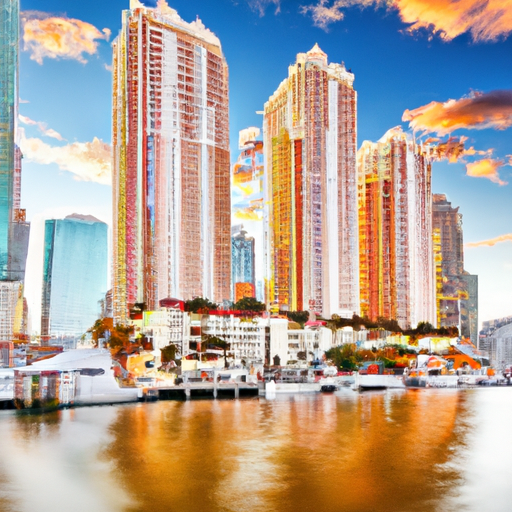
Public Art and Architecture
Integration of Artistic Expression in Buildings
Miami is not only known for its stunning architecture but also for its integration of artistic expression into buildings. Murals, sculptures, and installations can be found throughout the city, transforming the streetscape into a vibrant outdoor gallery. This integration of art and architecture adds another layer of creativity and visual interest to Miami’s urban environment.
Murals, Sculptures, and Installations
Miami’s public art scene is thriving, with artists from around the world leaving their mark on the city. Wynwood Walls, a famous outdoor street art gallery, showcases the work of renowned street artists, while the Design District features installations and sculptures by internationally acclaimed artists. These art installations not only enhance the aesthetic appeal of buildings but also create a sense of place and cultural identity within the community.
Promoting Cultural Engagement through Public Art
Public art in Miami serves as a catalyst for cultural engagement and community interaction. Artistic expressions in buildings, such as murals depicting local history or cultural themes, tell stories and foster a sense of pride and belonging. Public art events and festivals, like Art Basel Miami Beach and the Miami Street Photography Festival, bring artists and the community together to celebrate creativity and cultural diversity.
Conclusion
Appreciating Miami’s Architectural Diversity
Miami’s architecture is a testament to the city’s rich history, cultural diversity, and commitment to innovation. The unique blend of architectural styles, from Art Deco to Tropical Modernism, Latin American influences, sustainability efforts, waterfront designs, cultural diversity in design, urban development, and public art, create a visually stunning and vibrant urban landscape.
Continuing Evolution and Innovation
Miami’s architecture continues to evolve and innovate, adapting to the changing needs of the city and the demands of the future. Architects in Miami are embracing new technologies, sustainable practices, and design principles that enhance the urban experience and promote a sense of place.
Preserving the City’s Architectural Heritage
While Miami continues to grow and evolve, it is important to preserve and protect the city’s architectural heritage. Historic landmarks like those in the Art Deco Historic District and Coconut Grove are reminders of Miami’s past and contribute to its unique identity. By preserving these buildings and incorporating them into the fabric of the city, Miami ensures that its architectural heritage is celebrated and appreciated by future generations.
In conclusion, Miami’s architecture is truly special, offering a visual feast for residents and visitors alike. The city’s commitment to design, sustainability, cultural diversity, and artistic expression is evident in its buildings and urban landscapes. As Miami continues to evolve and innovate, its architecture will undoubtedly shape the city’s future, creating spaces that are not only visually stunning but also livable, sustainable, and reflective of the vibrant culture and identity of the city.
